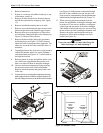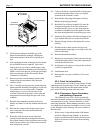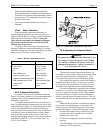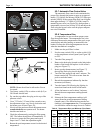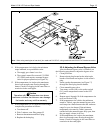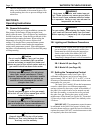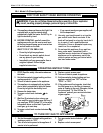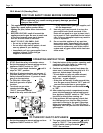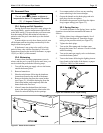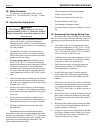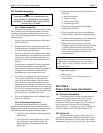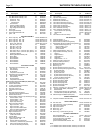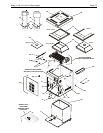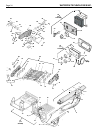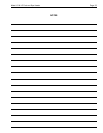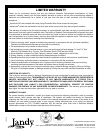
Page 20
WATERPIK TECHNOLOGIES INC.
3E. Water Chemistry
For notes on water chemistry please consult
sections 2G-4, 2G-4a and Table 7 on page 13 of this
manual.
3F. Spa/Hot Tub Safety Rules
WARNING
The following Safety Rules for Hot Tubs,
recommended by the U.S. Consumer Product
Safety Commission, should be observed when
using the spa.
1. Spa or hot tube water temperature should never
exceed 104°F (40°C). One hundred degrees
Fahrenheit (100°F [38°C]) is considered safe for
a healthy adult. Special caution is recommended
for young children.
2. The drinking of alcoholic beverages before or
during spa or hot tub use can cause drowsiness
which could lead to unconsciousness, and subse-
quently result in drowning.
3. Pregnant women take note! Soaking in water
above 102°F (38.5°C) can cause fetal damage
during the first three months of pregnancy (which
could result in the birth of a brain-damaged or
deformed child). If pregnant women are going to
use a spa or hot tub, they should make sure the
water temperature is below 100°F (38°C) maxi-
mum.
4. The water temperature should always be checked
with an accurate thermometer before entering a
spa or hot tub. Temperature controls may vary by
as much as 4F° (2C°).
5. Persons with a medical history of heart disease,
diabetes, circulatory or blood pressure problems
should consult their physician before using a hot
tub or spa.
6. Persons taking any medication which induces
drowsiness (e.g., tranquilizers, antihistamines, or
anticoagulants) should not use spas or hot tubs.
7. Prolonged immersion in hot water can induce
hyperthermia.
Hyperthermia occurs when the internal body
temperature reaches a level several degrees above the
normal body temperature of 98.6°F (37°C). Symptoms
include dizziness, fainting, drowsiness, lethargy, and
an increase in the internal body temperature. The
effects of hyperthermia include:
Lack of awareness of impending hazard
Failure to perceive heat
Failure to recognize need to leave spa
Physical inability to leave spa
Fetal damage in pregnant women
Unconsciousness resulting in a danger of drown-
ing
3G. Swimming Pool Energy Saving Tips
Waterpik Laars offers the following recommen-
dations to help conserve fuel and minimize the cost of
operating your pool heater without sacrificing com-
fort.
1. The American Red Cross recommends a maxi-
mum water temperature of 78°F (25°C). Use an
accurate pool thermometer. A difference of 4F°
(3C°) , between 78°F and 82°F (25°c and 28°C),
will use as much as 40% more gas.
2. Carefully monitor the water temperature of your
pool in the summertime. You can reduce heater
usage due to warmer air temperatures.
3. Find the proper setting on the pool heater tem-
perature control and use the TEMP-LOK to
discourage further adjustments.
4. Set the filter time clock to start the pump no
earlier than 6:00 AM during the pool heating
season. This is the time when nightly heat loss
balances.
5. If the pool is only going to be used on weekends,
reduce the heater temperature control setting by 8
or 10 degrees during the week. Reset it to the
78°F (25°C) level a day or so before you plan to
use the pool.
6. During the winter or when on vacation for longer
than a week, shut down the heater by following
the shutdown instructions found on the inside of
the heater.
7. Where possible, shelter the pool from prevailing
winds with well-trimmed hedges or other land-
scaping, cabanas, or fencing.
8. Always use a pool cover when practical. Besides
providing a valuable safety feature, a pool cover
will reduce heat loss, conserve chemicals, and
reduce the load on filter systems.



